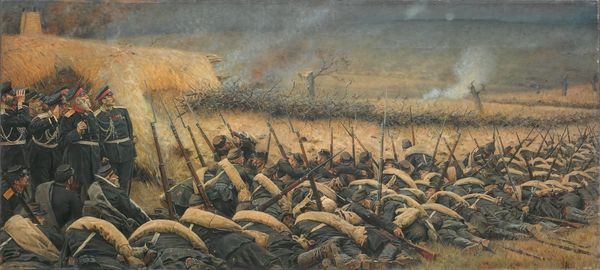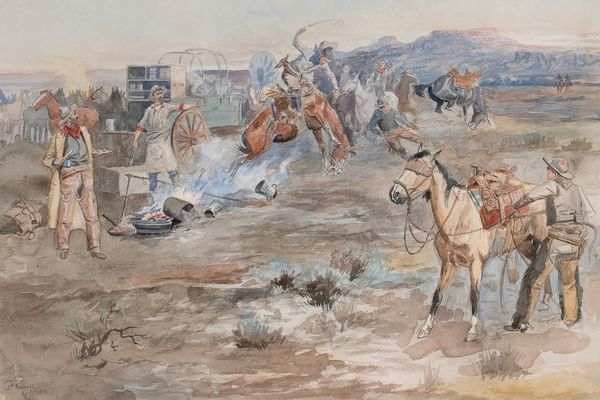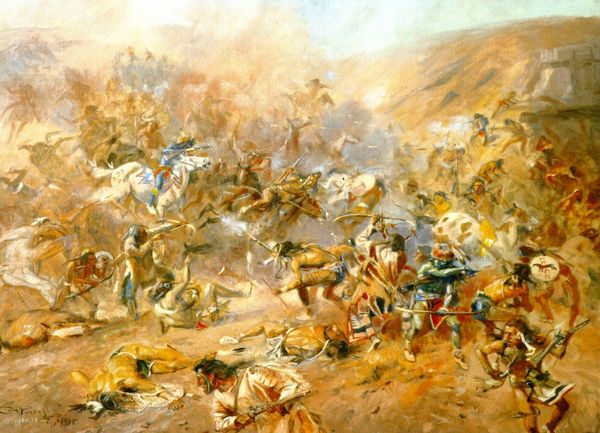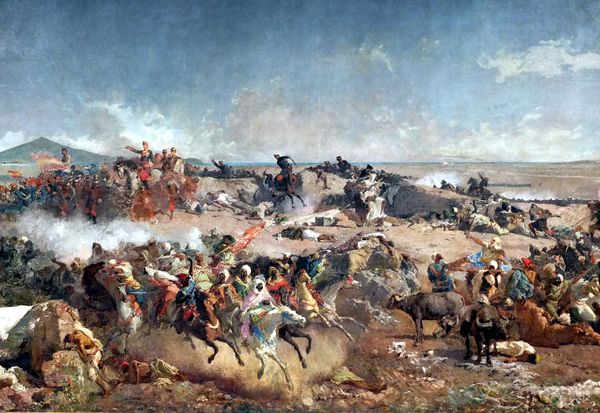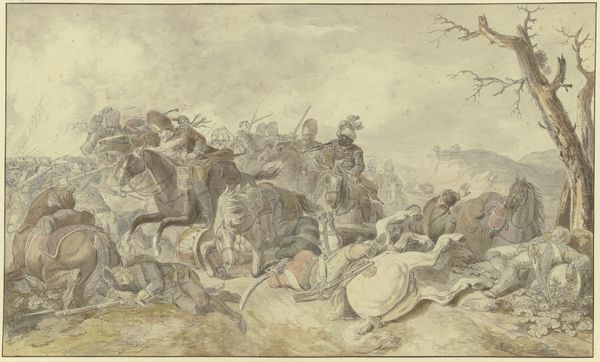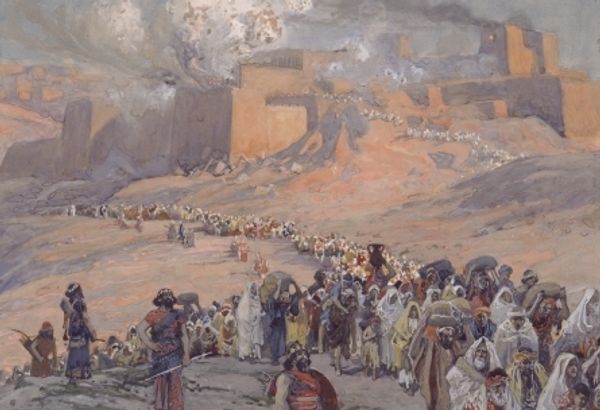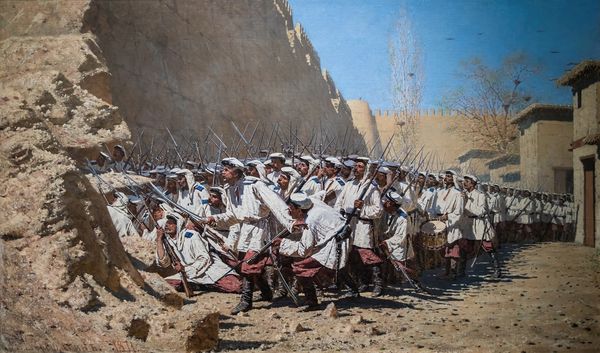
Copyright: Public Domain: Artvee
Vasily Vereshchagin painted 'After the Attack, Plevna, 1877-1878' sometime after the siege. The eye is immediately drawn to the canvas's striking horizontal composition, dominated by a palette of muted browns and greys, reflecting a landscape of despair. The arrangement of bodies creates a stark visual rhythm that speaks to the dehumanizing effect of war. Vereshchagin rejects romanticized battle scenes in favour of unflinching realism; his meticulous rendering of each fallen soldier and discarded weapon challenges heroic narratives. The painting functions as a signifier of post-conflict desolation, challenging viewers to confront the brutal reality of war stripped of ideological gloss. The artist uses spatial organization to underscore themes of loss and futility, prompting us to reflect on the structural violence inherent in military conflict. 'After the Attack' is not merely a depiction of aftermath; it is a structural critique of war's tragic and lasting impact.
Comments
No comments
Be the first to comment and join the conversation on the ultimate creative platform.


